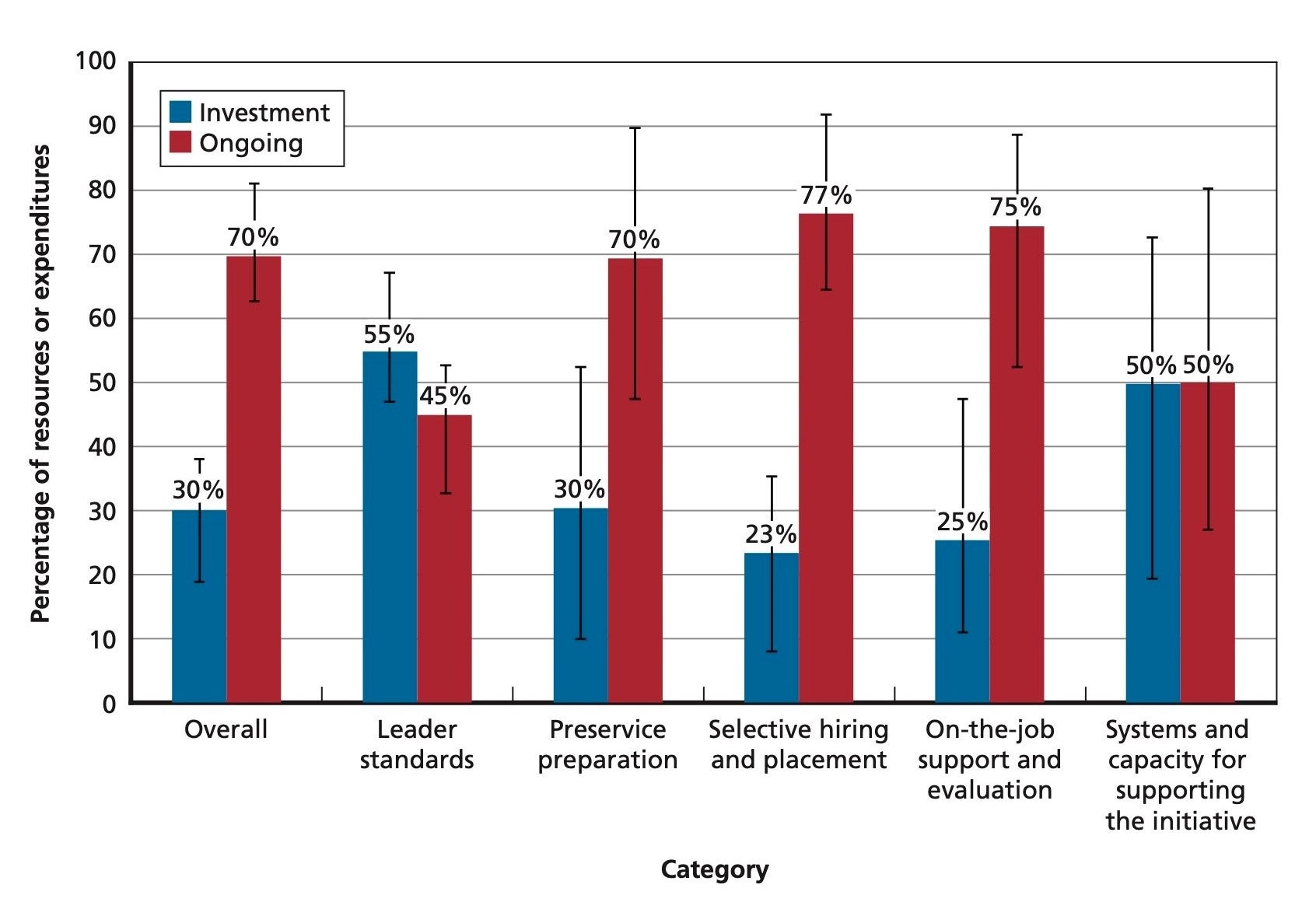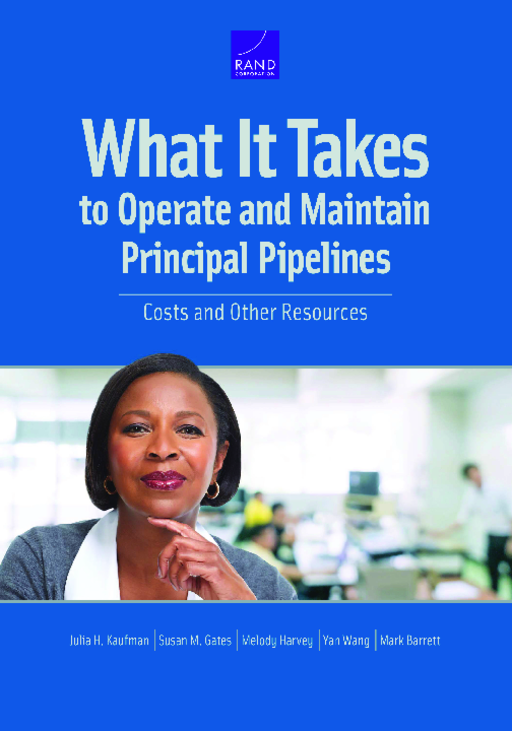Breadcrumb
- Wallace
- Reports
- What It Takes To Operate And Mai...
What It Takes to Operate and Maintain Principal Pipelines
Costs and Other Resources

- Author(s)
- Julia H. Kaufman, Susan M. Gates, Melody Harvey, Yan Wang, and Mark Barrett
- Publisher(s)
- RAND Corporation
- DOI Link
- https://doi.org/10.7249/RR2078
Summary
How we did this
Researchers created a list of activities associated with each of four key principal pipeline components. They also listed activities that could constitute a system of support for the pipeline. They then gathered data on the resources and expenditures associated with all those activities from the six school districts that took part in Wallace's Principal Pipeline Initiative.
An effective school principal can boost learning for hundreds or even thousands of students. That's why states and districts increasingly see sound school leadership as a strategy to raise student achievement. But many have questions about the costs of a pipeline to produce a large corps of high-quality principals. This RAND report provides answers.
The study examines what six large districts spent on creating and operating comprehensive principal pipelines between 2011 and 2015. All were part of The Wallace Foundation’s Principal Pipeline Initiative. The pipelines built by the districts produced substantial benefits. Pipeline-district schools with newly placed principals outperformed comparison schools in other districts after three years to a statistically significant degree. Principal turnover was also lower in pipeline schools after three years.
This cost study finds that principal pipelines are also affordable. The cost per district was less than one percent (0.4 percent) of district annual expenditures. That was equal to an average of about $5.6 million a year per district. That came to a cost of $42 per year for each student the district enrolled. These costs included both direct expenditures and personnel time.

The ongoing costs of poor school leadership are less visible but arguably more significant than the costs of replacing school leaders.
The principal pipelines studied had four key components:
- Job standards for principals to guide the other three pipeline parts. Many districts found revising standards to be a “quick win” with high impact.
- High-quality pre-service training for both aspiring principals and assistant principals
- Rigorous hiring and placement procedures guided by standards and objective data
- On-the-job evaluation and support such as coaching and mentoring.
The study calculates the average annual expenditures for each component:
- Revision of school leader standards: $0.50 per pupil enrolled in the district.
- Selective hiring and placement: $4 per pupil. About half of this expense went to updating the pre-initiative approaches.
- Pre-service preparation: $13 per pupil.
- On-the-job evaluation and support: $19 per pupil.
Costs varied by district depending on the design of their efforts. For example some districts had principal residencies as part of their preservice training. Stipends for the residents were a substantial expense.
Principal pipelines require a significant investment of district personnel time. District personnel costs made up almost half the costs of principal pipeline activities. But researchers note that pipelines have the potential to provide significant savings to districts. Well-prepared principals are more likely to remain in their jobs and retain strong teachers. That reduces the cost of staff turnover for districts.
The six districts participating in the Principal Pipeline Initiative were:
- Charlotte-Mecklenburg Schools, N.C.
- Denver Public Schools
- Gwinnett County Public Schools, Ga.
- Hillsborough County Public Schools, Fla.
- New York City Department of Education
- Prince George’s County Public Schools, Md.
Key Takeaways
- Principal pipelines are affordable. Six large districts created and operated pipelines to prepare and support new principles. It cost less than one percent (0.4 percent) of their annual expenditures during the five-years studied. That came to an average cost of $42 per year for each student the district enrolled. Costs included both direct expenditures and personnel time.
- The pipeline had four key components. Researchers calculated the annual cost of each component averaged over five years. Two components cost relatively less. Revision of school leader standards cost only $0.50 per pupil enrolled in the district. Selective hiring and placement cost $4 per pupil districtwide. About half of this expense was revising the existing system.
- Two pipeline components had higher average annual costs. Pre-service preparation cost $13 per pupil. On-the-job evaluation and support cost $19 per pupil. Costs varied by district depending on the design of their program.
- Principal pipelines require a significant investment of district personnel time. But researchers note that pipelines have the potential to provide significant savings to districts. Well-prepared principals are more likely to remain in their jobs and retain strong teachers. That reduces the cost of staff turnover for districts.
Visualizations
Pipeline Component Costs: Percentage of Total Outlay, School Years 2012 to 2015

Pipeline Investments vs. Ongoing Costs, School Years 2012 to 2015










